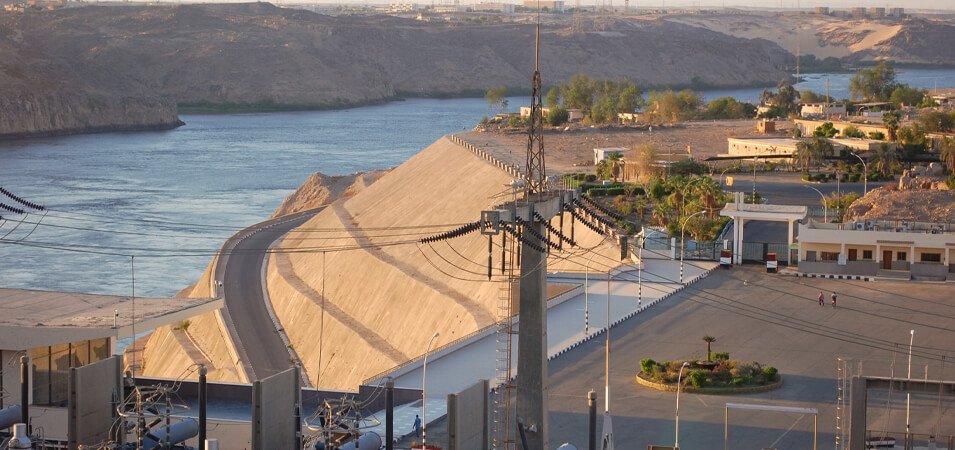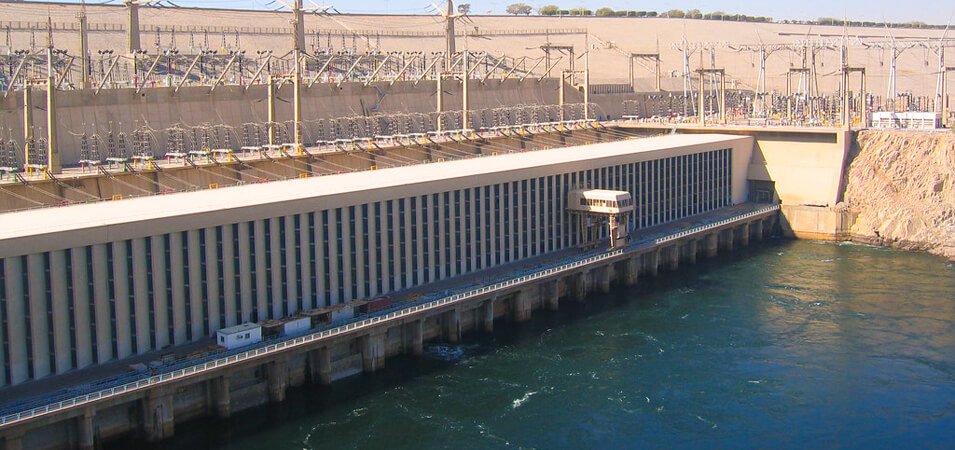The Aswan High Dam is one of the most iconic and significant engineering feats of the 20th century. Located on the Nile River in southern Egypt, it has not only transformed the landscape of Egypt but also reshaped the country’s economy, agriculture, and energy production. Completed in 1970, the dam stands as a symbol of modern Egyptian engineering and a testament to the power of human ingenuity.
The dam’s construction marked a pivotal moment in both Egypt’s history and global civil engineering. The Aswan High Dam is a vital resource for the country, controlling flooding, regulating water supply, and providing hydroelectric power to millions. Its creation allowed for the expansion of agricultural land, ensuring food security in a region historically dependent on the seasonal flooding of the Nile.
This article aims to provide a comprehensive guide to the Aswan High Dam, exploring its historical context, construction, and the multifaceted impact it has had on Egypt and the wider world. By delving into its significance, this article will offer insights into how the dam has shaped modern Egypt, from its influence on water management to its role in fostering economic growth. Understanding the legacy of the Aswan High Dam allows us to appreciate not just a remarkable engineering structure but also the vision and ambition that led to its creation.
Overview of the Aswan High Dam
Location and Key Facts
The Aswan High Dam is located on the Nile River in southern Egypt, near the city of Aswan, approximately 13 kilometers from the Egyptian-Sudanese border. Completed in 1970 after a decade of construction, the dam is an engineering marvel that dramatically altered the flow of the Nile River. Its creation was largely funded through international aid, most notably from the Soviet Union and other global partners, after the United States withdrew its initial support in the mid-1950s due to political tensions.
The dam stretches an impressive 3,830 meters in length and rises 111 meters above the riverbed, making it one of the largest dams in the world. It forms the vast Lake Nasser reservoir, one of the largest artificial lakes globally, which has a storage capacity of about 132 cubic kilometers of water. This extraordinary scale is not just an architectural achievement but an essential element in Egypt’s ability to manage the vital resource of water, ensuring stability and growth in the region.

Purpose of the Dam
The Aswan High Dam was designed with three primary objectives in mind: flood control, hydroelectric power generation, and agricultural irrigation. Each of these serves a critical role in supporting Egypt’s economy and agricultural system.
- Flood Control: Prior to the construction of the dam, the Nile’s annual flooding was unpredictable and could cause either devastating floods or droughts. The dam regulates the flow of water, mitigating the risk of destructive floods and ensuring a consistent water supply year-round.
- Hydroelectric Power Generation: The dam’s turbines generate electricity that powers millions of homes and industries throughout Egypt, making it a cornerstone of the nation’s energy infrastructure.
- Agricultural Irrigation: By storing and regulating water from the Nile, the dam ensures that Egypt’s vast agricultural sector—especially the crops that rely on irrigation, such as wheat and cotton—can thrive even during dry years. This has been vital for sustaining Egypt’s economy, which is heavily dependent on agriculture.
Building the Aswan High Dam
Challenges Leading to Its Construction
Before the Aswan High Dam, Egypt faced major challenges from the unpredictable annual Nile floods. While beneficial for agriculture, these floods were often damaging, and inconsistent flooding led to droughts in some years. As Egypt’s population and water demand grew, it became clear that a reliable system to control and store water was needed to support agriculture and urban development.
Additionally, Sudan, which shares the Nile, also required better water management. The need for a large-scale solution to flood control, water storage, and irrigation became urgent for both nations.
Timeline of Construction
Efforts to control the Nile go back to the early 20th century with the Aswan Low Dam (1902), which helped with irrigation but was not sufficient. Serious plans for a larger dam emerged in the 1950s. Initially, Egypt sought Western support, but geopolitical tensions led to the withdrawal of both the U.S. and Britain in 1956. The Soviet Union, however, stepped in, providing both financial and technical aid.
Construction began in 1960 and involved significant challenges, including the relocation of entire communities and dealing with difficult terrain. The dam was completed in 1970, becoming one of the largest and most complex engineering projects of its time.
Understanding the Engineering Marvel
- Innovative Construction Techniques: The Aswan High Dam is a remarkable feat of engineering, using sand, clay, and rock sourced locally. Over 18 million cubic meters of earth were excavated to create a stable foundation. One of its most significant features is Lake Nasser, a vast reservoir with a storage capacity of 132 cubic kilometers. This reservoir plays a vital role in controlling the Nile’s flow, ensuring consistent water supply for irrigation and hydroelectric power generation.
- Hydroelectric Power Generation: The dam’s hydroelectric system features 12 turbines that generate 2,100 megawatts of power, accounting for 10% of Egypt’s energy. This power supplies homes, industries, and agriculture, reducing Egypt’s reliance on fossil fuels. The electricity generated also supports critical infrastructure, such as irrigation systems and desalination plants.
Environmental Considerations
The dam’s environmental impact includes:
- Sedimentation: Trapped sediments in Lake Nasser reduce water quality and affect downstream soil fertility.
- Wildlife Impact: The loss of natural flooding has disrupted fish migration and led to declining biodiversity in surrounding ecosystems.
- Ecosystem Changes: The controlled flow of the Nile has altered farming practices, leading to issues like increased soil salinity in some regions.
Benefits of the Aswan High Dam
Agricultural Development
The Aswan High Dam has greatly expanded irrigation coverage, ensuring a steady water supply for Egypt’s agriculture. By controlling flooding, it has reduced crop failures and boosted yields, particularly in Upper Egypt, improving food security.

Power Supply and Industrial Growth
The dam provides reliable electricity, generating 2,100 megawatts, supporting both urban and rural areas. It has spurred industrial growth by powering factories, irrigation systems, and infrastructure, contributing to Egypt’s modernization.
Social Improvements
The dam has prevented flood-related displacement, protecting communities from the destructive annual floods. By stabilizing water levels, it has improved living standards, providing a more predictable environment for agriculture and development.
Criticism and Controversies
Environmental and Cultural Costs
The dam has caused the loss of archaeological sites, such as the Abu Simbel temples, which were relocated. It also led to the displacement of Nubian communities, who were forced to move as their ancestral lands were submerged.
Long-term Challenges
The dam faces long-term challenges: sedimentation buildup reduces soil fertility downstream, requiring artificial fertilization. Additionally, water security is a concern, as Egypt’s reliance on Nile water creates tensions with neighboring countries over access to shared resources.
A Guide for Tourists
- How to Get There: The Aswan High Dam is easily accessible from Aswan, a major city in southern Egypt. Transportation options include trains, boats, or flights to Aswan. Once in the city, the dam is a short drive away. Visitors can also explore nearby attractions, such as Lake Nasser, on their way to the dam.
- What to Expect on a Tour: At the dam, visitors can enjoy panoramic views of the Nile River from dedicated viewing platforms. Guided tours provide in-depth information about the dam’s history, engineering, and its impact on Egypt. Guides explain the dam’s construction, the creation of Lake Nasser, and the significance of its power generation.
- Nearby Attractions: While in the area, visitors can explore nearby Lake Nasser by taking cruises that offer scenic views and a closer look at the massive reservoir. Other nearby sites include the Philae Temple, dedicated to the goddess Isis, and the famous Abu Simbel temples, which were relocated to save them from flooding caused by the dam.
Conclusion
The Aswan High Dam stands as a cornerstone in Egypt’s history, playing a crucial role in the nation’s economic development, agricultural advancement, and social progress. It revolutionized water management, powered industrial growth, and improved living conditions, while also serving as a symbol of Egyptian ambition and engineering excellence. However, its legacy is not without debate, as the dam’s environmental and cultural costs continue to provoke discussion.
Whether you see it as an engineering marvel or a controversial project, the Aswan High Dam remains a testament to human ingenuity. For anyone interested in Egypt’s rich history and modern achievements, visiting the dam offers a chance to experience firsthand its immense scale and enduring impact. Don’t miss the opportunity to see this iconic landmark in person.
